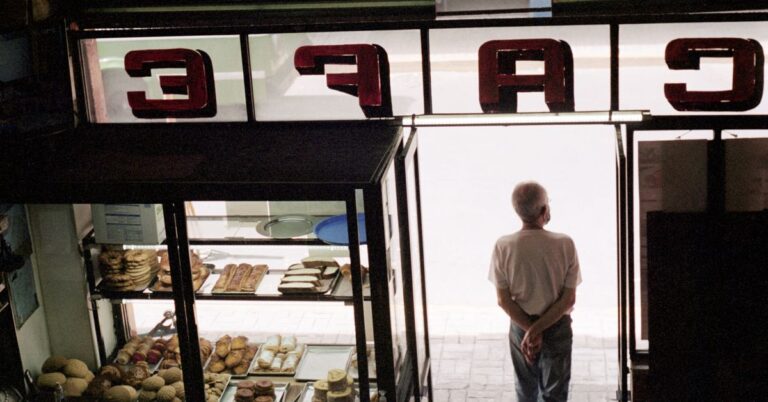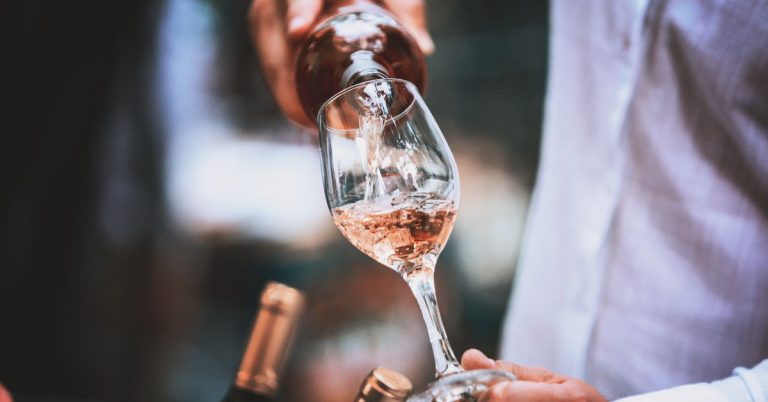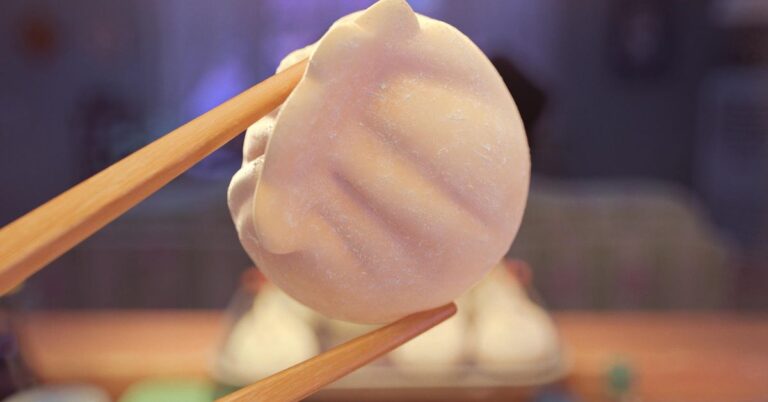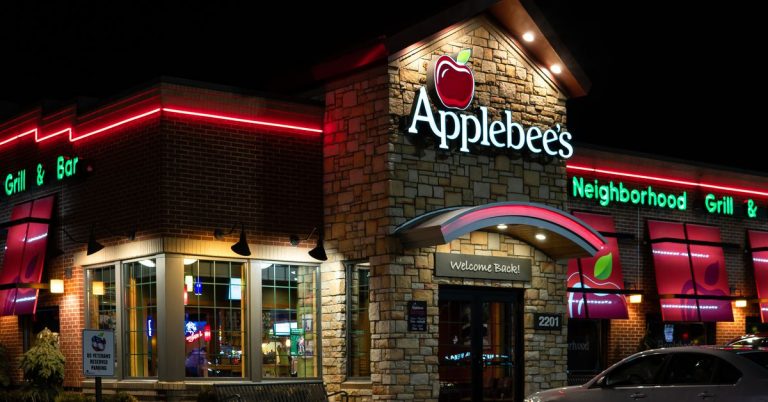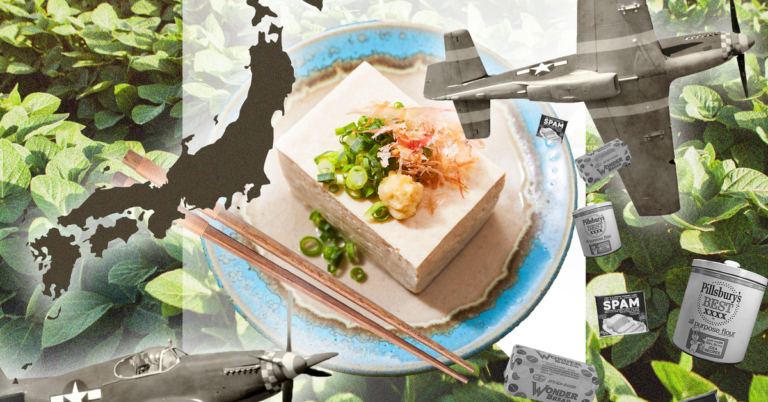I Drank the Portland-Made Cotton Candy Hard Seltzer so You Don’t Have To
Since the early days of White Claw, hard seltzer has only continued to proliferate. Brands like Spindrift and Bud Light have launched their own varieties, seltzer bars have opened around the country, and there’s a whole traveling festival dedicated to spiked sparkling water. So it was only a matter of time before someone in Portland — a city known for its beverage scene, be it coffee or booze – would develop their own brand.
That someone was Adam Milne, the man behind Old Town Brewing; he and the brewers at Old Town started selling their line of hard seltzers, Upper Left Seltzer Co. (no relation to the cafe of the same name), in September, available at the brewery, Baby Doll Pizza, and Zupan’s. The company launched with only two flavors: Key lime pie and cotton candy.
When this news first broke, I’ll admit I winced at the premise (I even wrote the headline “A New Portland Company Is Making Cotton Candy Hard Seltzer, Whether You Like It or Not” on September 17). I’m not someone who is inherently anti-hard seltzer; I’ve been known to partake in a White Claw from time to time. But the premise of drinking what is essentially concentrated, floss-ified sugar, melted down with some sort of ethanol, didn’t exactly appeal. Then again, I’m an adventurous woman; I’ve consumed my fair share of moonshines and backyard booze that very well could have left me paralyzed or dead. So when Upper Left — perhaps in response to my slightly snarky headline — sent me six cans of seltzer, I thought, cotton candy hard seltzer can’t hurt me, right?
I cracked open a can of the cotton candy hard seltzer on a Wednesday afternoon. It smelled like almost nothing, offering the slightest whiff of a cotton candy Dum Dum. On the palate, it is not exactly cotton candy — a closer relative may be blue raspberry Laffy Taffy, chewed near an open bottle of nail polish remover. Over time, however, the initial sweetness subsides, and it transitions into that classic hard seltzer flavor, sort of like a mix between vodka and turpentine.
The brand’s other flavor, Key lime pie, smells more like graham crackers and vanilla than Key lime, though there’s a whisper of citrus there; yes, I’m sniffing the can as if it’s a glass of 2015 pinot noir, which my coworkers rightfully mocked me for on a Zoom happy hour. On the palate, however, this is the clear winner: It allows for more layers of flavor, and it doesn’t taste like I stole a handful of lollipops from a pizza place after a frat party. Initially, it tastes similar to a Key lime LaCroix but mixed with a clarified milk punch, before that classic hit of ethanol pops in to remind you not to drink six in the middle of your workday, Brooke.
The cotton candy doesn’t taste nearly as sweet as the Key lime pie — perhaps this has to do with the sort of condensed milk-vanilla relative in the Key lime pie flavor, or perhaps that natural fragrant sweetness the Floridian citrus is known for. That being said, there is still something overwhelmingly uninviting about cotton candy-flavored seltzer. So what is it about the Upper Left cotton candy flavor that turns me off? Is it my preconceived notion of what cotton candy seltzer would taste like?
Let’s take a minute to think about seltzer. Mineral water culture — sparkling water, unadulterated by superfluous flavors or juices to let its natural components and terroir shine — is having its culinary moment in the United States, with water sommeliers in high-end restaurants and glass bottles from every corner of the world in specialty store aisles. For many connoisseurs, mineral water is the next level, after using a flavored seltzer as your entry point. In Punch, beverage writer (and Portlander) Jordan Michelman argues that the seltzer renaissance in 2019 was simply a stepping stone on the path to a rediscovery and reimagining of mineral water. “My own avid consumption of La Croix, which is just filtered tap water that’s been force-carbonated and flavored, had become reflexive, habitual, desultory—a drink to drink when I didn’t feel like using my brain, the water equivalent of ordering a Starbucks coffee,” Michelman writes. “The seltzer boom (and likely impending bust) has opened a door for us to reconsider what mineral water is, and who it should be for.” He compares high-end, “fine water,” as it’s called, to natural wine, or natural-process coffee, two beverages that have grown in popularity among those who are exploring the boundaries and definitions of certain drinks we thought we knew. All three beverages, however, are also tied up in a fixation on the natural: letting a product exist as close to its original form as possible.
But there’s a possibility that Upper Left’s choice to go with saccharine flavors was a deliberate rejection of the pretense surrounding how we eat and drink, because in a world where everything feels terrifying and scary, people seem to be seeking comfort. In 2019, Rachel Sugar wrote about the fixation on naturally sweetened seltzers for Vox, specifically the rising appeal of Spindrift, with its emphasis on “real ingredients” — a nod to the overarching cultural shift away from low-calorie food and beverage in favor of “wellness.” But years later, Sugar isn’t sure people are focused on what’s in their food or drink in the same way; rather, people seem to be seeking respite from the constant fixation on health and restriction. “Flavored seltzers, the whole beverage market, everything is about pretending you don’t want the thing that you want,” Sugar told me. “Part of the nostalgia is not just that it’s cotton candy, but that when we ate cotton candy as kids, it was garbage, and the garbage-ness was okay. What it brings up in terms of simplicity or looking back — it’s fun to enjoy things without that valence or morality.”
Upper Left Seltzer Co. is unabashed in its acknowledgement of the seltzers’ hyper-artificial flavors; in fact, it’s part of the schtick. “When we first started conceptualizing a new craft seltzer brand, we knew we wanted to create something that of course, tasted incredible, but also evoked a feeling of nostalgia and fun. There are tons of fruit and herbaceous flavored seltzers on the market, so (we) went with something completely different,” Milne says in a press release. That same press release describes the flavors as “inspired by the retro confections and local pop-stores of the 1970’s, married with pure ingredients and light, crisp flavors,” saying the seltzers “celebrate the nostalgic feeling of biting into your favorite salt-water taffy.”
It’s not that an artificial or sugary flavor is inherently bad, in a hard seltzer or in any other beverage. It’s that a hard seltzer, at its core, needs to be able to cover up the flavor of whatever unnamed, unclassifiable alcohol gives it that 5 percent ABV. The Key lime pie offers a balance of different flavors that successfully distract from the mystery spirit behind the curtain. The folks at White Claw have figured out how to introduce just enough lime, or mango, or watermelon to distract from the booze. Cotton candy is nothing but colored sugar, spun with air to create aesthetically silly, uncomplicated fun. Hard seltzer, similarly, is more about the story it provides than the sum of its parts: a low-calorie mixed drink, a “guilt”-free way to pound drinks all night. By producing a cotton candy seltzer, Upper Left doubled down on the illusion of a good time, without actually paying attention to what went in the can. After drinking it, I felt the way I usually feel after eating cotton candy: a little sick, kind of headache-y, and ready to lose the aftertaste.


